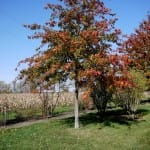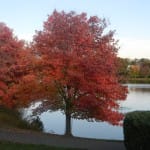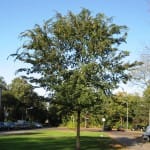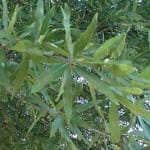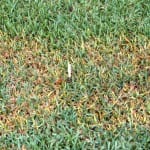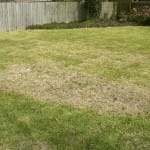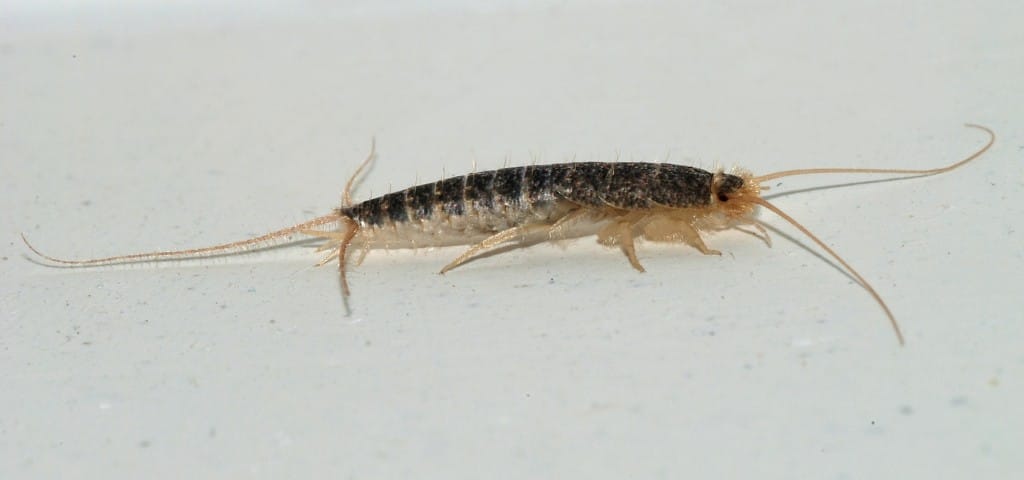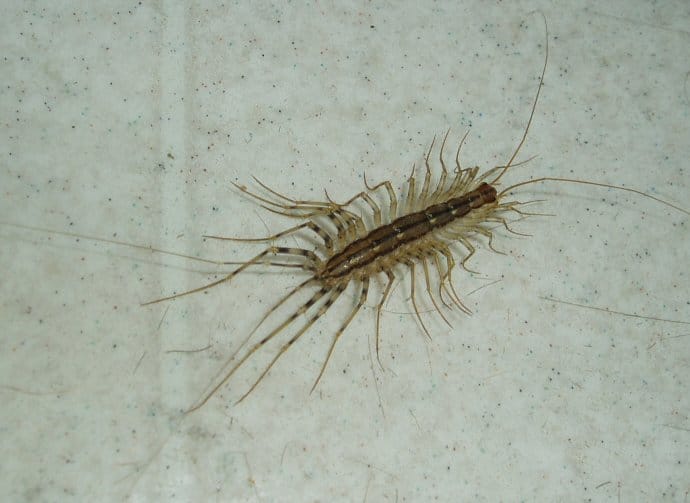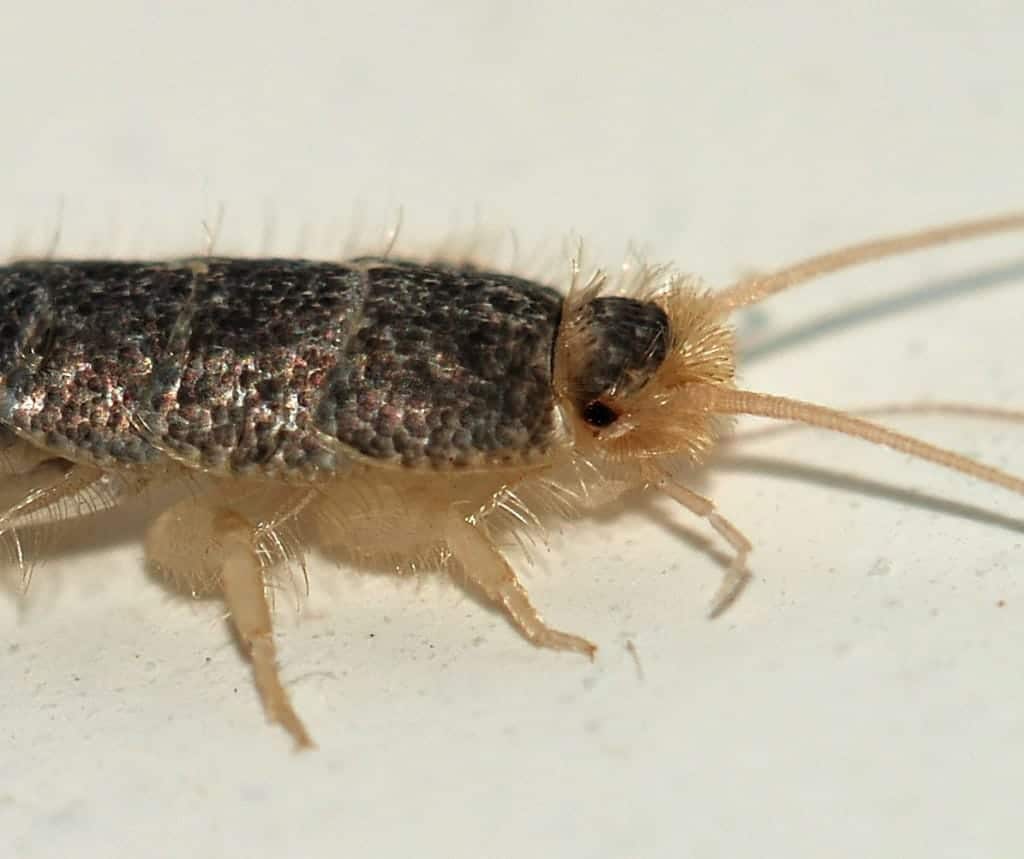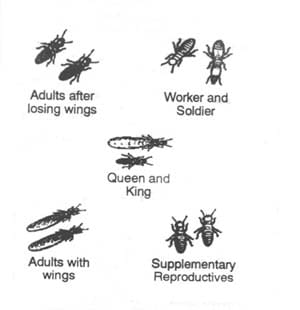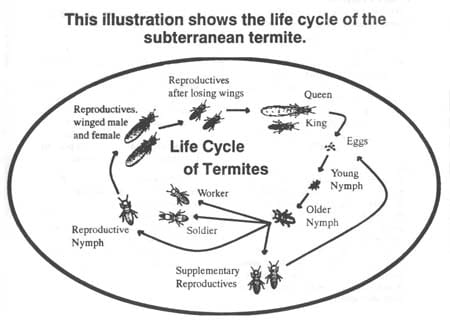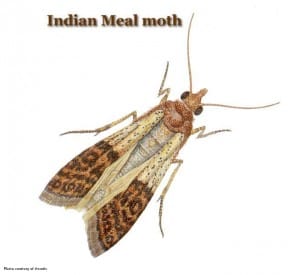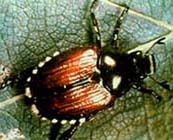Source(s): Michele Browne, Former Horticulture Program Assistant – Cobb County Extension.
There are certain plants that just have a natural association with gardening in the South: magnolias, azaleas, camellias, and, of course, hydrangea. In previous generations, it would be hard to find a little white frame country home without a big bush of puffy, extravagant pink, blue, or white hydrangea blooms in a place of honor by the front door.
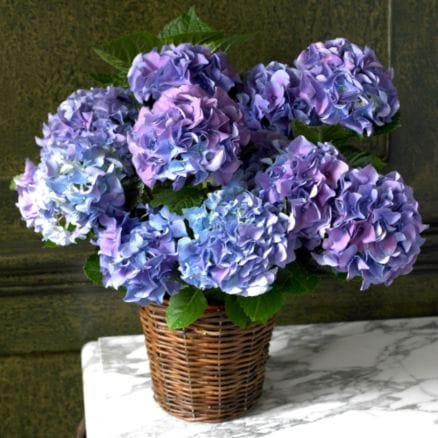 When most people hear the word “hydrangea,” they visualize Hydrangea macrophylla, or Bigleaf Hydrangea. This is the traditional hydrangea with the large puffball type of bloom in shades of blue or pink (color is dictated by the pH of the soil). However, there are many types of hydrangea, some more popular and appropriate to our gardens than others.The chart below lists five popular types:
When most people hear the word “hydrangea,” they visualize Hydrangea macrophylla, or Bigleaf Hydrangea. This is the traditional hydrangea with the large puffball type of bloom in shades of blue or pink (color is dictated by the pH of the soil). However, there are many types of hydrangea, some more popular and appropriate to our gardens than others.The chart below lists five popular types:
Where to Plant Your Hydrangea
Hydrangeas love a location where they can get morning sun and afternoon shade. They will grow in locations with afternoon sun, but will probably wilt and need more supplemental watering. In either situation, don’t expect your plants to take full sun. The large leaves of hydrangea result in more water loss (transpiration) in the heat of summer, so all hydrangeas need a break from the sun. However, beware of deep shade – hydrangeas need 3-4 hours of direct sunlight to put on the best bloom show. The exception here is Oakleaf hydrangea. This Georgia native is stunning as an understory shrub beneath mature trees. As long as it receives good slanted sun in either early morning or late afternoon, it seems to bloom fine. Avoid planting any hydrangea in locations that stay soggy or very dry.
How to Plant and Care for Hydrangea
Dig a hole at least twice the size of the plant container. If possible, amend the bed around the hydrangea from 6-8 inches deep in an area several feet from the plant. If the soil is heavy clay, mix in 1/3 organic material such as homemade compost, finely ground pine bark chips, shredded leaves, composted cow manure, or mushroom compost (do not use peat moss – it breaks down too quickly). At the same time you may choose to mix in a slow release fertilizer such as Osmocote. If the hydrangea is potbound (has tightly packed roots that are running around the outside next to the container) be sure to cut into this root mass in several places, breaking up the roots and allowing them to spread into the surrounding soil. In severe cases you may even need to cut away excess, overgrown root material. Plant the plant at soil level or slightly higher to allow for soil settling. Water until puddles form around the plant and all the air bubbles have escaped. Apply two to three inches of mulch, avoiding piling mulch around the stem(s) of the plant.
Water your new hydrangea consistently during its first spring, summer, and fall. The larger the plant you have planted (3 – 5 gallon), the more it will need watering in the first year to compensate for its reduced root system. A thorough drenching of the root system once or twice a week is infinitely preferred to a daily “sprinkle.”
Hydrangeas have a reputation for being “water hungry.” Adequate water is critical in the high growth months of spring. However careful planting and mulching can go a long way to reduce watering needs.
Many hydrangeas (just like people!) will wilt during the heat of a summer afternoon. This is because their large leaves are giving off water faster than the roots of the plant can replace it. As soon as the sun goes down, they perk back up. Don’t assume that a wilted plant needs watering. Check the soil moisture level to a depth of 4-5”. If it is moist, put off watering until the soil is dry.
All blooming plants need a good schedule of fertilization and hydrangeas are no exception. A balanced fertilizer such as 8-8-8 or 10-10-10 sprinkled around the plant at the drip line in March, May, and July will do well. If you want to avoid repeat applications, apply a timed-release formulation in early March.
Read the fertilizer label for amount to apply. In early spring the plants will benefit from a 1 ½ to 2 inch layer of composted cow manure out to their drip line to add organics.
A Note on “Florist” Hydrangeas: “Florist” hydrangeas are usually just Bigleaf Hydrangeas that have been cultivated to stay small and bloom early and extravagantly. They’ve been grown in greenhouses under ideal conditions. You cannot take a plant grown under such conditions out to the garden without some care. When you receive one for a gift, enjoy its blooms. If it is cold outside, cut back the blooms and treat it as a houseplant until you can move it outside after the danger of frost in the spring. Be sure to remember that a hydrangea planted outdoors is a shrub averaging 3 feet tall by 3 feet wide. A gift hydrangea in bloom cannot be expected to bloom again in that same year. Don’t expect much in the way of bloom on a young hydrangea planted outdoors for the first two to three years.
Description of Hydrangea Bloom Forms:
|
Mophead
|
Panicle
|
Lacecap
|
|
Round or globe shaped flower cluster, this is the most commonly recognized form of hydrangea bloom.
|
Long (up to 12-14 inches), somewhat cone-shaped flower cluster (particularly in Oakleaf hydrangeas).
|
Flattened cluster of what appear to be tiny, immature buds surrounded at the edges by typical 4 to 5 petal flowers. Lacecaps are named after their likeness to Colonial ladies’ headcoverings
|
How to Prune Hydrangeas:
How and when to prune hydrangeas is an issue for many gardeners, even those with experience.
Pruning is done to:
- reduce plant size or reshape plant
- remove old, non-productive branches
- remove frost damaged leaves
- deadhead blossoms
Below are pruning guidelines for each of the five popular types of hydrangea listed in the table above.
Bigleaf Hydrangea (Hydrangea macrophylla) Flowers bloom on last year’s wood. In early spring remove older, woodier branches at ground level to allow more light and air circulation. (Note: Determine whether or not a branch is dead by scratching the bark with a fingernail or small knife. If there is green directly beneath the surface, the branch is alive.) After the last frost date, around mid April, clip or pull off any frost damaged leaves.
Do major pruning and reshaping after the blooms begin to fade in July, but no later than August 1st. On a mature bush (5-6 years old) remove 1/3 of the oldest woody stems each year by cutting to the ground. Encourage further new foliage growth by deadheading (removing faded flowers).
Oakleaf Hydrangea (Hydrangea quercifolia)
This is a large shrub that should be left to grow in its natural form. Flowers bloom on previous season’s wood. Prune after flowering only to remove dead wood, old flower heads and 1/3 of the oldest wood (to increase light and air circulation). If necessary, severe pruning (back to only two buds at the base of each stem) may be done in early spring (late February to early March) to renew overgrown plants.
Peegee Hydrangeas (Hydrangea paniculata ‘Grandiflora’)
Flowers develop on new wood. Plants may be handled in two ways: 1). Cut back severely to leave only two buds at the base of each stem in early March. or 2). Allow plant to develop without pruning. Blooms will still appear on new growth. Severe early pruning produces a smaller plant with larger blooms; not pruning produces a larger plant with many smaller blooms.*
Smooth Hydrangea (Hydrangea arborescens ‘Annabelle’)
Flowers bloom on current year’s wood. Prune entire plant back to 6-12” from ground in early March.*
Climbing Hydrangeas (Hydrangea anomola petiolaris)
Little or no pruning is required. In the summer, if needed, remove unwanted shoots that have grown out of bounds. (Note: Trees are not harmed by climbing hydrangea.)
*Note: Peegee and Annabelle hydrangeas, because they bloom on this year’s wood, do not have their buds damaged by the late spring frosts that so often harm Bigleaf hydrangeas. This makes them especially well adapted to growing in the Atlanta area.
Failure to Bloom
Failure to bloom can be attributed to any or all of the following causes:
- Winter/early spring frost injury to flower buds
- Pruning in late summer
- Too much shade
- Excess nitrogen
Color Change in Bigleaf Hydrangeas
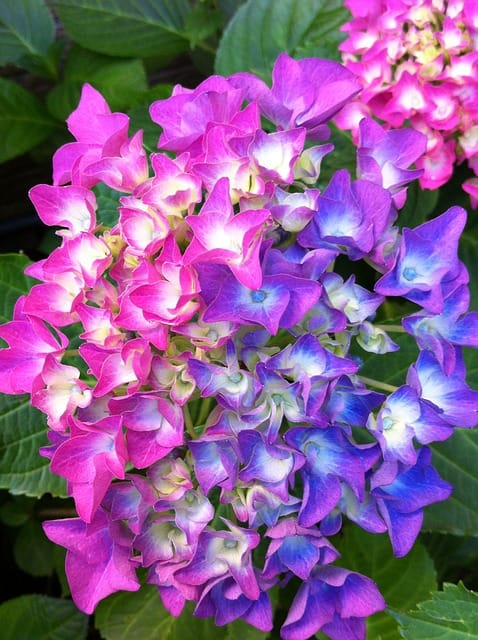 The color of Bigleaf or French Hydrangeas is influenced by the availability of aluminum in the soil. In acid soils more aluminum is available resulting in blue color; in alkaline soils with less aluminum available, the flowers are pink. A quick way to influence soil pH (acidity/alkalinity) for an individual plant is to apply a liquid soil drench:
The color of Bigleaf or French Hydrangeas is influenced by the availability of aluminum in the soil. In acid soils more aluminum is available resulting in blue color; in alkaline soils with less aluminum available, the flowers are pink. A quick way to influence soil pH (acidity/alkalinity) for an individual plant is to apply a liquid soil drench:
- To make flowers blue, dissolve 1 tablespoon of alum (aluminum sulfate) in a gallon of water and drench the soil around the plant in March, April, and May.
- To make flowers pink, dissolve 1 tablespoon of hydrated lime in a gallon of water and drench the soil around the plant in March, April, and May.
Avoid applying to the leaves, as foliar damage can occur.
Some Popular Bigleaf Hydrangeas to Consider for Your Garden:
- ‘Ayesha’ – 4-6 ft. tall with very unusual mophead blooms. Individual flower petals are slightly cupped and tightly packed together – gives the effect of popcorn.
- ‘All Summer Beauty’ – 3-4 ft. tall with flowers produced on current year’s wood.
- ‘Nikko Blue’- 4-6 ft. tall with the most dependably rich blue flower heads (in slightly acidic soil); mophead bloom.
- ‘Pia’ – dwarf selection (1-2 ft. tall) with carmine red mophead blooms.
- ‘Lanarth White’ – 3 ft. tall with lacecap blooms composed of pink or blue fertile flowers surrounded by a ring of pure white sterile flowers.
- ‘Blue Wave’ – large 6-7 ft. plant covered with blue lacecap flowers in a layered effect.
- ‘Preziosa’ – extremely interesting plant with mophead blooms that start a pale pink then mature darker pink, rose, wine red, then finally rust. Gives multiple season interest.
This is an extremely small sampling of the available varieties. Explore your local nurseries for different offerings.
Five Popular Hydrangeas for Atlanta Area Gardeners:
|
Common Name
|
Flower Form*
|
Flower Color
|
Bloom Time
|
Pruning Time
|
|
Bigleaf hydrangea, Garden hydrangea, French hydrangea, Common hydrangea
(Hydrangea macrophylla)
|
Mophead or Lacecap
|
Pink, Pink Reds,
Blue, Blue Violet,
Purple (color controlled by soil pH)
|
May thru early July. Deadhead promptly after flowers begin to fade. Deadheading means to remove faded flowers. Some plants may rebloom in fall. Flowers bloom on last year’s wood.
|
After bloom – July (always before August 1st)
|
|
Oakleaf hydrangea (hydrangea quercifolia)
|
Panicle
|
White fading to pinkish purple
|
June – blooms appear later than Bigleaf hydrangea and last a longer period of time, typically thru summer. Sets buds on last year’s wood.
|
This plant does not usually need pruning. If reshaping or size-reduction is necessary, prune after blooms begin to fade.
|
|
Peegee hydrangea
(Hydrangea paniculata ‘Grandiflora’)
|
Panicle
|
White fading to pinkish bronze in fall.
|
May-June. “Tardiva” variety blooms in August.
|
March — Prune entire plant back to 6-12” from ground around March 1st. Plant blooms on current year’s wood. Or leave
unpruned –blossoms will appear on new growth.
|
|
Smooth hydrangea
(hydrangea arborescens ‘Annabelle’)
|
Mophead
|
White
|
May-June
|
Prune entire plant back to 6-12” from ground around March 1st. Plant blooms on current year’s wood.
|
|
Climbing hydrangea
(hydrangea anomola petiolaris)
|
Lacecap
|
White
|
June.
|
May not need pruning, except to shape. Prune after bloom.
|
Sources:
Hydrangeas: A Gardener’s Guide, Lawson-Hall & Rothera, 1995.
The Southern Living Garden Book, Steve Bender, 1998.
Hydrangea Culture, Leaflet 162, UGA Cooperative Extension Service, 1979.
Ornamental Horticulture Facts: Growing Bigleaf Hydrangea, FactSheet H-92-011, UGA Cooperative Extension Service,1992.
Hydrangea Identification and Pruning Guide, Cobb County Cooperative Extension Service, 2002.
Center Publication Number: 7
